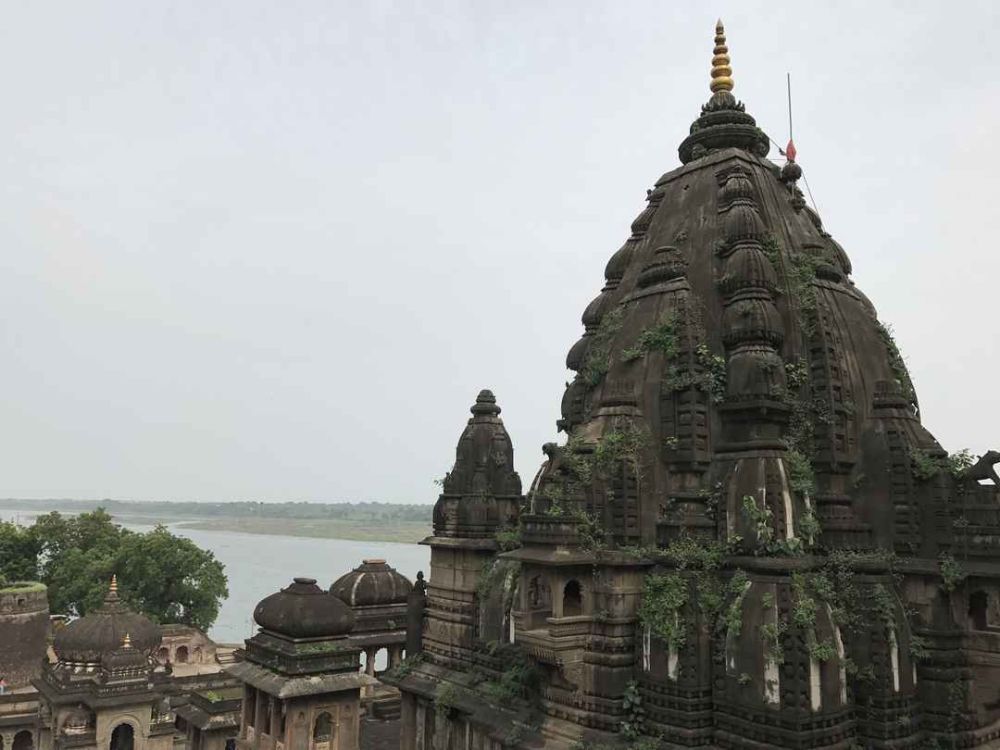

Maheshwar, a quaint town nestled on the banks of the revered Narmada River in Madhya Pradesh, India, is steeped in spirituality and history. This ancient town is mentioned in the epics Ramayana and Mahabharata, indicating its long-standing significance in Indian culture.
Once the capital of the Malwa region, Maheshwar's historical importance is highlighted by its mention in the writings of renowned travelers like Ibn Battuta and Jean-Baptiste Tavernier. The tourism aspect of Maheshwar, and specifically the Jaleshwar Temple, started gaining prominence with the establishment of the Holkar dynasty in the 18th century. Queen Ahilyabai Holkar, the revered monarch, developed Maheshwar as a major cultural center, commissioning temples and ghats which in turn attracted pilgrims and tourists.
Since then, the town has become synonymous with spiritual tourism. Devotees and history enthusiasts flock to Maheshwar for its serene atmosphere, architectural wonders, and its intricate Maheshwari textiles. The Jaleshwar Temple, dedicated to Lord Shiva, adds to the town's religious significance, drawing visitors with its peaceful environs and architectural splendor.
Standing as a beacon of heritage, the Jaleshwar Temple is one of the lesser-known yet significant temples in Maheshwar. While its exact origins remain a subject of research, it is believed to have been constructed several centuries ago, with enhancements made during the Holkar period. The temple's connection to the waters of the Narmada River gives it a unique place among the many Shiva temples dotting the landscape.
The temple's architecture is typical of Maratha-era designs with a simple yet elegant structure. The sanctum houses a Shiva lingam, and the temple's walls depict various stories from Hindu mythology. Despite the ravages of time, Jaleshwar Temple continues to be an important spiritual destination in Maheshwar.
In recent years, there has been an emphasis on sustainable and eco-friendly tourism practices in Maheshwar. This includes promoting homestays, encouraging local crafts like the Maheshwari sarees, and maintaining the cleanliness of the river and its surroundings.
Another emerging trend is the combination of pilgrimage and leisure tourism. More visitors are seeking a holistic experience that combines the spiritual solace of places like the Jaleshwar Temple with relaxed experiences at the serene riverbanks or engaging in peaceful boat rides on the Narmada.
Adventure tourism is also picking up, with activities such as river rafting being introduced to cater to younger and more adventure-seeking travelers.
Maheshwar's focus on cultural tourism is also on the rise. Festivals like the Narmada Jayanti and the Maheshwar Mahotsav celebrate the town's cultural and spiritual heritage, enticing tourists to participate in the local customs and rituals.
The Jaleshwar Temple in Maheshwar is more than just a tourist site; it's a living testament to the town's undying spiritual essence and a reminder of its glorious past. As tourism patterns evolve, Maheshwar continues to maintain a perfect balance between preserving its sanctity and accommodating the changing preferences of visitors from across the world.